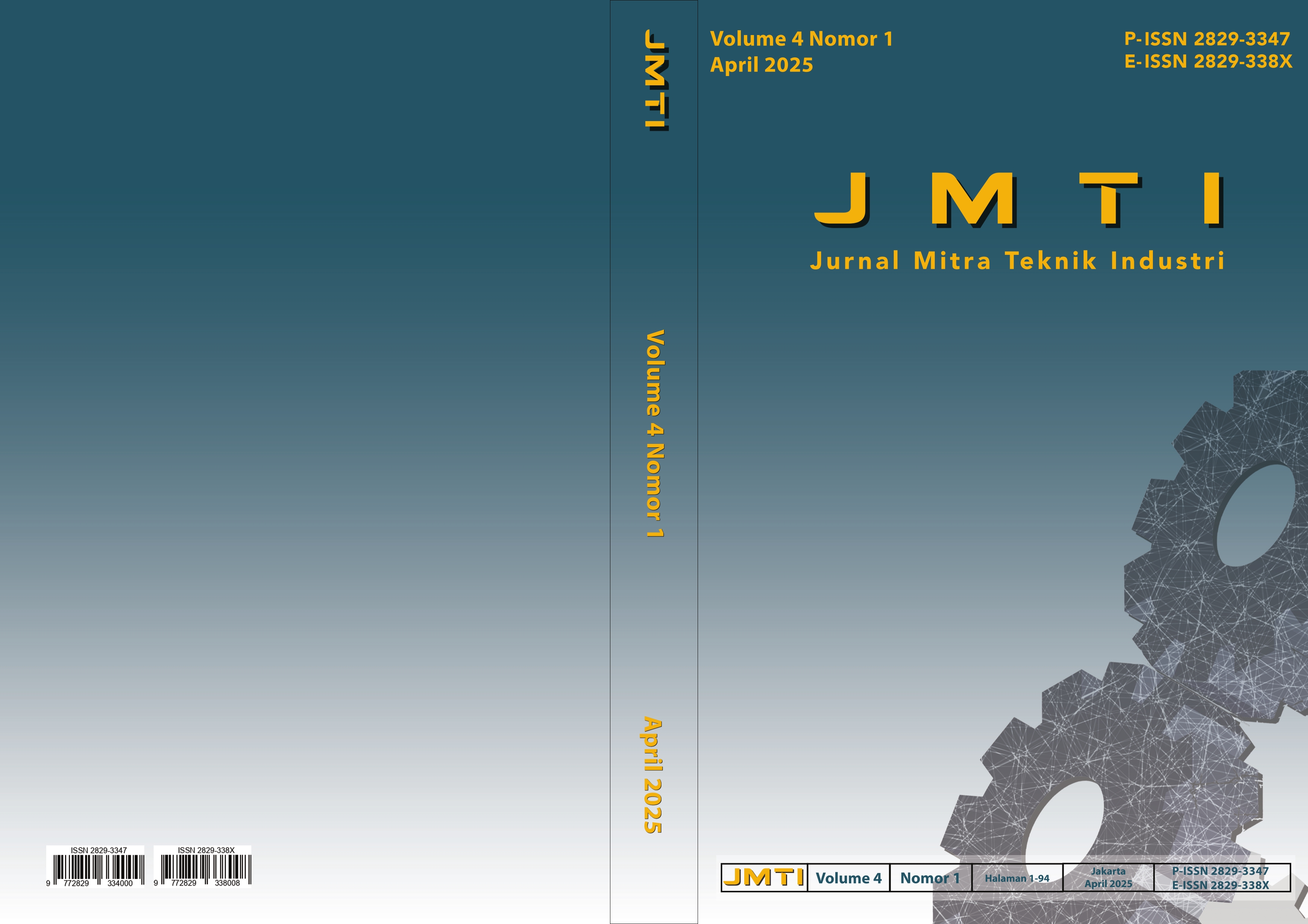PENDEKATAN GREEN LEAN SIX SIGMA UNTUK MINIMISASI LIMBAH DALAM PRODUKSI PRODUK GELAS DI INDUSTRI PERALATAN PLASTIK RUMAH TANGGA
Isi Artikel Utama
Abstrak
This research was conducted at a company that produces household plastic equipment by implementing the Green Lean Six Sigma approach. The method used in this research is DMAIC (Define, Measure, Analyze, Improve, Control). At the identification stage, waste analysis was carried out using the VALSAT tool, which revealed that the main wastes occurred in the aspects of waiting and product defects. In addition, this research also measured the liquid and solid waste generated due to defective products. The usage of water and materials in the production process was measured and used as indicators to evaluate environmental aspects. The analysis results showed that the company's initial efficiency was 27.91%, with a Defects Per Million Opportunities (DPMO) rate of 5320.19 and a sigma level of 1.358. These findings indicate the need for more attention to process improvement. Improvement recommendations were made based on identifying the root causes of problems using a fishbone diagram and Risk Priority Number (RPN) analysis from Failure Mode and Effects Analysis (FMEA), resulting in prioritized recommendations to address defective products and generated waste. After implementing the proposed improvements, the company's efficiency increased to 73.17%. Additionally, waste management was also suggested to further enhance the company's sustainability and operational efficiency.
Rincian Artikel

Artikel ini berlisensiCreative Commons Attribution-NonCommercial-ShareAlike 4.0 International License.
Referensi
[1] V. Gaspersz, Lean Six Sigma for Manufacturing and Service Industries, Jakarta: PT. Gramedia Pustaka Utama, 2007.
[2] M.S. Kaswan and R. Rathi, “Green Lean Six Sigma for Sustainable Development: Integration and Framework,” Environmental Impact Assessment Review, vol. 83, 2020.
[3] J. Mohan, R. Rathi, M.S. Kaswan, and S.S. Nain “Green Lean Six Sigma Journey: Conceptualization and Realization,” Materials Today: Proceedings, vol. 50, 2022.
[4] P. Hines and N. Rich “The Seven Value Stream Mapping Tools,” International Journal of Operations & Production Management, vol. 17, no. 1, pp. 46-64, 1997.
[5] J.R. Evans dan W.M. Linsay, An Introduction to Six Sigma & Process Improvement, Jakarta: Salemba Empat, 2007.
[6] D.A. Novitasari, “Analisis Kapabilitas Proses untuk Pengendalian Kualitas Produk Pembatas Buku Industri Rumahan,” Jurnal EKBIS, vol. 14, no. 2, pp. 722-727, 2015.
[7] H. Gholami, N. Jamil, M.Z. Mat Saman, D. Streimikiene, S. Sharif, and N. Zakuan, “The Application of Green Lean Six Sigma,” Business Strategy and the Environment, vol. 30, no. 4. 2021.
[8] S. Gultom, T.S. Sinaga, and S. Sinulingga, “Studi Pengendalian Mutu dengan Menggunakan Pendekatan Lean Six sigma pada PT. XYZ,” Jurnal Teknik Industri USU, vol. 3, no. 2, 2013.
[9] K.D. Sharma and S. Srivastava, “Failure Mode and Effect Analysis (FMEA) Implementation: A Literature Review,” Journal Of Advance Research in Aeronautics and Space Science, vol. 5, no. 1 & 2, pp. 1-17, 2018.
[10] A.S. Torres and A.M. Gati, “Environmental Value Stream Mapping as Sustainability Management Tool,” PICMET'09-2009 Portland International Conference on Management of Engineering & Technology, 2009



